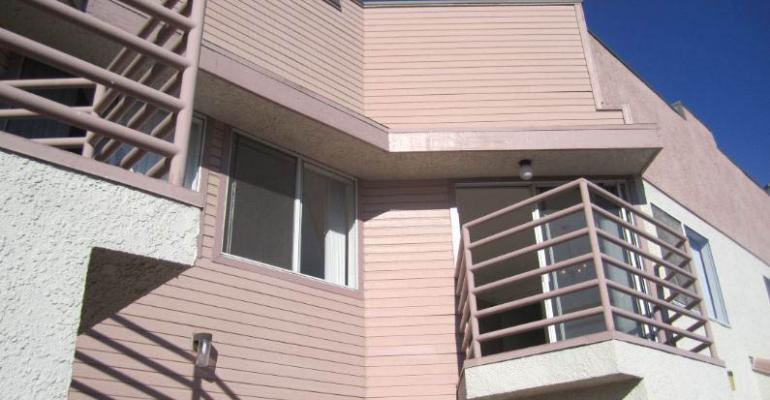Voters in Los Angeles will pick more than a new U.S. President this week. Further down the ballot, they get a vote on “inclusionary zoning.” The “Build Better L.A. Initiative”—Measure JJJ—would require housing developers to include apartments priced to be affordable for low and moderate income households in new projects in exchange for any zoning changes or general plan amendments they may need in order to go ahead with construction.
Several of the nation’s largest cities already have inclusionary zoning laws like this on the books, including New York City, Washington, D.C., and San Francisco, and more cities are joining the trend.
“The activity continues to unfold at the local level… from Nashville to Atlanta,” says Stockton Williams, executive director of the Urban Land Institute’s Terwilliger Center for Housing and co-author of ULI’s recent report “The Economics of Inclusionary Development.”
Inclusionary zoning rules have been around for a long time, starting with programs in Palm Beach, Fla. and Montgomery County, Md. more than a decade ago. These programs only began to spread quickly over the last few years, with the recent boom in the development of new, luxury apartments. That’s because inclusionary zoning rules only work in places where there is already a substantial and sustained amount of apartment development happening.
“In the last few years, we have seen an enormous amount of investment in class-A apartment development in central cities,” says Williams. “That has spurred the interest in this policy.”
Apartment boom powers inclusionary zoning
Rents are rising across the country. The cost of housing is so high that one-in-four working renters and 16 percent of working homeowners pay more than half of their income for housing. That adds up to nearly 10 million working households struggling with housing costs, according to the Center for Housing Policy. “There is pressure on rents to a level not seen,” says Williams.
Housing advocates are pressing for some relief for working families. At the same time, developers are rushing to build new apartments to benefit from the demand for housing. Programs like inclusionary zoning can sometimes be a win-win for both groups, if only they are designed correctly, according to Williams.
In this year alone, several cities have considered new inclusionary zoning rules. In Pittsburgh, the mayor’s Affordable Housing Task Force recommended inclusionary zoning this spring. San Francisco is busy implementing a plan approved by the voters in June to strengthen its existing inclusionary zoning statute.
In exchange, inclusionary zoning rules typically offer the developers some kind of incentive, like a tax break or a “zoning bonus” that would allow them to build more apartments on the site than the zoning rules currently allow. Without incentives like these, inclusionary zoning statutes might be vulnerable to a challenge on legal grounds, as an “unjust taking” of something valuable from property owners without compensation.
Most programs are mandatory, with a wide variety in where and when the requirements apply, according to ULI. For example, New York City recently toughened its inclusionary zoning requirements to mandatory in some cases, though the requirements are highly targeted toward the neighborhoods where developers want to build. Planners need to look at inclusionary zoning policies with the eyes of a property appraiser. “Inclusionary zoning requirements would reduce land value compared to the ‘highest and best use’ for the land,” says Williams. If a developer agrees to charge a lower rent for an apartment, that will have a long-term effect on the income produced by the building. “It does have a pretty substantial impact,” he notes.
Critics claim inclusionary zoning programs will either drive up housing prices or choke off development. “The risk is that these policies may suppress development—undermining the goal of the policy and resulting in less housing overall,” according to the a report by New York University’s Furman Center. For example, Seattle’s program created 56 units of affordable housing in 13 years, while San Francisco’s generated 1,560 in 12 years, according to analysis by the Furman Center of reports on these programs.
In addition, after developers open buildings created under inclusionary zoning rules, these buildings may benefit from having a few apartments underwritten to operate at very competitive, below-market rents. Those apartments are likely to stay full even if the overall rental market slows.
ULI lists the top incentives offered by cities to entice developers to include affordable housing through inclusionary zoning programs. These include:
Direct construction subsidies, though expensive, can help make development more feasible;
Tax abatements can incentivize development in otherwise infeasible locations. “Relatively few cities to date have used tax abatements in connection with inclusionary zoning, suggesting an opportunity for wider use,” according to ULI;
Density bonuses can enhance feasibility where development is already occurring;
Reduced parking can sometimes enhance feasibility;
Opt-out options can provide flexibility, but come with trade-offs. Famously, New York City asked developers in its Battery Park neighborhoods to pay to develop affordable housing that took a long time to materialize.

